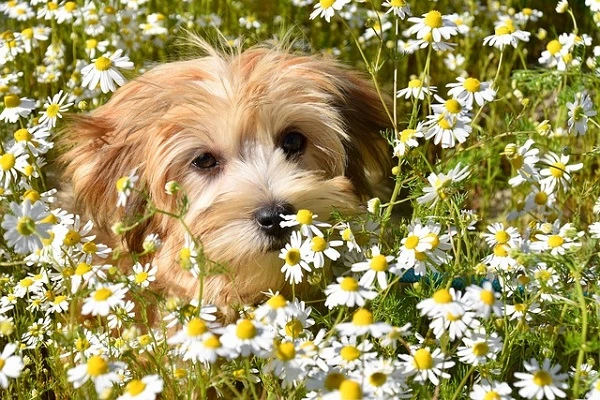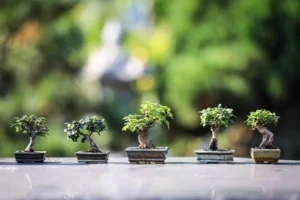Starting sprouts in a small apartment feels like a fresh, healthy adventure—until your cat decides it’s a jungle gym, or your dog thinks it’s a snack bar.
If you’ve tried before, you know the chaos: tipped jars, scattered seeds, and mysterious paw prints. Suddenly, your “green corner” looks more like a crime scene.
Don’t worry—you’re not alone. Many first-time sprouters with pets hit the same wall.
The good news is that you don’t have to choose between happy pets and happy plants. With the right setup and a little planning, you can grow fresh, crunchy sprouts without the mess—or the pet drama.
Why Sprouts Are a Perfect Beginner Hydroponic Project
Sprouts are like the “instant gratification” project of the hydroponic world. You don’t need fancy gear, complex lighting systems, or months of patience. In just a few days, you’ll see green shoots ready to eat.
For beginners, that quick win matters. It builds confidence and keeps you excited to try more. If you’ve never grown anything before, sprouts are forgiving—miss a rinse once, and they’ll probably still thrive.
They also fit beautifully into small apartments. Sprout setups are compact, light, and can live happily on a kitchen counter or window ledge. You don’t have to rearrange your furniture or drill into walls to get started.
Plus, they’re inexpensive. A handful of seeds and a simple container can yield multiple servings of fresh greens. It’s a low-risk way to explore hydroponics without feeling like you’ve committed to a big, expensive system.
Another bonus: you don’t need soil. This means no dirt trails, no muddy water, and no chance for your pets to dig around like it’s their personal sandbox.
Think of sprouting as the “entry-level” skill that opens the door to bigger projects, like vertical towers or multi-level herb gardens. You’ll learn how to manage water, light, and airflow—all on a smaller, easier scale.
In short, sprouts are the perfect low-stress, high-reward first step into the world of DIY hydroponics.
Pet-Proofing Your Sprout Setup From Day One
If you’ve got pets, you already know they’re equal parts adorable and destructive. A jar of soaking seeds or a tray of tender sprouts? To them, it’s either a toy, a snack, or both.
Your first defense is location. Height is your ally. Cats may leap, but if your sprouts aren’t in sight, they’re less likely to bother. Dogs usually focus on what’s at nose level—so keeping things up high is doubly effective.
Closed sprouting containers are your second line of protection. Options with locking lids, mesh tops, or snap-on covers prevent paw access, reduce spill risk, and stop stray fur from drifting inside.
Avoid placing sprouts on coffee tables, low counters, or any shelf your cat already treats like a throne. Instead, think vertical: a tall kitchen shelf, a wall-mounted rack, or even the top of your fridge.
Smell matters too. Healthy sprouts barely smell at all, but neglected rinses can lead to odor—and odor invites pet curiosity. Stick to a consistent rinse schedule and immediately clean any spilled seeds.
Some sprout lovers go the extra mile with a “pet buffer zone.” This could be as simple as growing inside a closed cupboard with a small grow light, using a baby gate, or reusing an old aquarium as a sprout enclosure.
Think of pet-proofing like putting up a safety fence for your greens. Once it’s set, you’ll spend less time shooing away curious noses and more time enjoying your fresh harvest—mess-free and drama-free.
Choosing the Right No-Mess Sprouting Method
When pets are part of the equation, the sprouting method you choose can make or break your mess-free goals. Not all setups are equally spill-proof, chew-proof, or paw-resistant.
Jar Method
This classic approach is cheap and beginner-friendly. You just need a mason jar, some mesh, and a rubber band. But, it’s not the most stable option—one curious nudge from a pet can send it rolling.
Tray Method
Sprouting trays allow for bigger harvests and better airflow. They’re great for variety, but open trays are basically an open salad bar for pets. You’ll need to place them high or cover them with a protective lid.
Compact Stackable Sprouters
These are a win for small apartments and pet-proofing. They use vertical space efficiently, come with enclosed layers, and keep everything tidy. Plus, they’re less likely to tip over than jars or open trays.
When choosing, think about stability, coverage, and how easily you can move the setup. A lightweight jar is fine if you can tuck it away. A heavy, lidded sprouter is better if you want something safe in plain sight.
Avoid containers with loose-fitting lids, breakable glass in low spots, or anything so light it can be batted around like a toy. Remember—pets don’t need thumbs to cause chaos.
Choosing the right method from the start means fewer accidents, less cleanup, and more stress-free growing. It’s worth spending an extra few minutes (or dollars) to ensure your sprouts are safe, secure, and thriving.
Step-by-Step: Setting Up a Clean, Pet-Safe Sprout Station
A tidy, pet-safe sprout setup starts with preparation. First, rinse your seeds thoroughly to remove dust or debris. This helps prevent odors and mold, which can attract curious noses.
Next, choose your container. If you’re using jars, fit them with secure mesh lids. For trays, ensure they have a snug cover or can be placed inside a protective enclosure.
Find the perfect spot. Aim for somewhere with good airflow, indirect sunlight, and—most importantly—out of reach of paws. High shelves, wall-mounted racks, or enclosed cabinets with a grow light are ideal for small apartments.
When it’s time to soak and rinse, do it over a sink to avoid drips and puddles. Wipe the outside of your container after each rinse so there’s nothing for pets to lick or paw at.
Keep a small towel or mat under your sprout station. It’ll catch any stray drops and make cleanup quick. If you’re using multiple layers, stack them securely so they won’t topple if bumped.
For a truly pet-proof touch, consider adding a light cover, like a mesh tent or transparent storage box, around your sprouting area. It won’t block airflow but will discourage “inspections.”
Finally, stick to your rinse schedule. Healthy, odor-free sprouts are less tempting to pets and keep your space smelling fresh.
With a setup like this, you’ll not only protect your sprouts—you’ll also save yourself from chasing rolling seeds across the floor at 10 p.m.
Avoiding Common Beginner Mistakes
Every new sprouter makes a few blunders, but when pets are around, small mistakes can turn into big messes. Most of these are easy to avoid once you know what to watch for.
Mistake #1 – Leaving sprouts within paw’s reach.
Even the most disciplined pets get curious. Keep your sprouting setup off the floor, away from low counters, and out of jumping zones.
Mistake #2 – Overwatering.
Too much water can cause leaks, mold, and strange smells. Follow the “rinse and drain” rule—thorough rinsing, then full draining. No soggy bottoms.
Mistake #3 – Skipping rinses.
Life gets busy, but forgetting a rinse invites bacteria, odor, and pet interest. Set reminders on your phone until rinsing becomes a habit.
Mistake #4 – Using unstable containers.
Light jars, wobbly trays, and loose lids are just accidents waiting to happen. Choose sturdy, covered setups that won’t tip easily.
Mistake #5 – Letting seeds scatter.
Loose seeds on the floor are both messy and unsafe for pets to eat. Use a tray or towel during prep to catch any strays.
Mistake #6 – Ignoring airflow.
Poor ventilation leads to musty sprouts, which pets might investigate. Make sure your setup has space around it for air to circulate.
Avoiding these pitfalls will save you time, cleanup, and stress. Plus, your sprouts will be fresher, healthier, and ready for harvest without any paw prints.
Conclusion: Your First Tidy Harvest With Pets Around
Raising sprouts in a small apartment with pets isn’t about luck—it’s about planning. With the right container, location, and habits, you can enjoy fresh greens without dealing with paw prints or toppled jars.
Think of this as your starter win in hydroponics. You’ve learned how to balance growth, cleanliness, and pet safety—skills that will serve you well when you move on to bigger projects like vertical towers.
So go ahead, set up that first batch. Watch your sprouts grow day by day, knowing they’re safe from curious noses. Your harvest will taste even better when it’s mess-free and drama-free.
Fresh sprouts, happy pets, and a tidy home—now that’s a success story.




